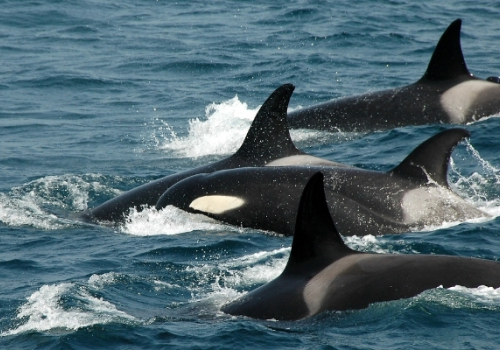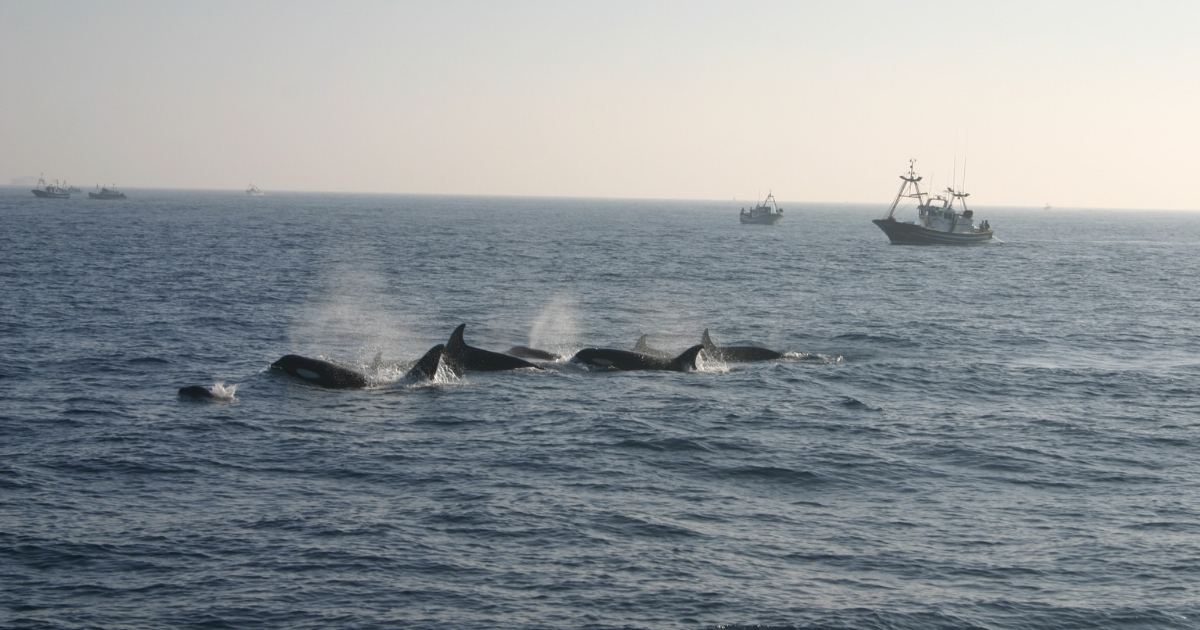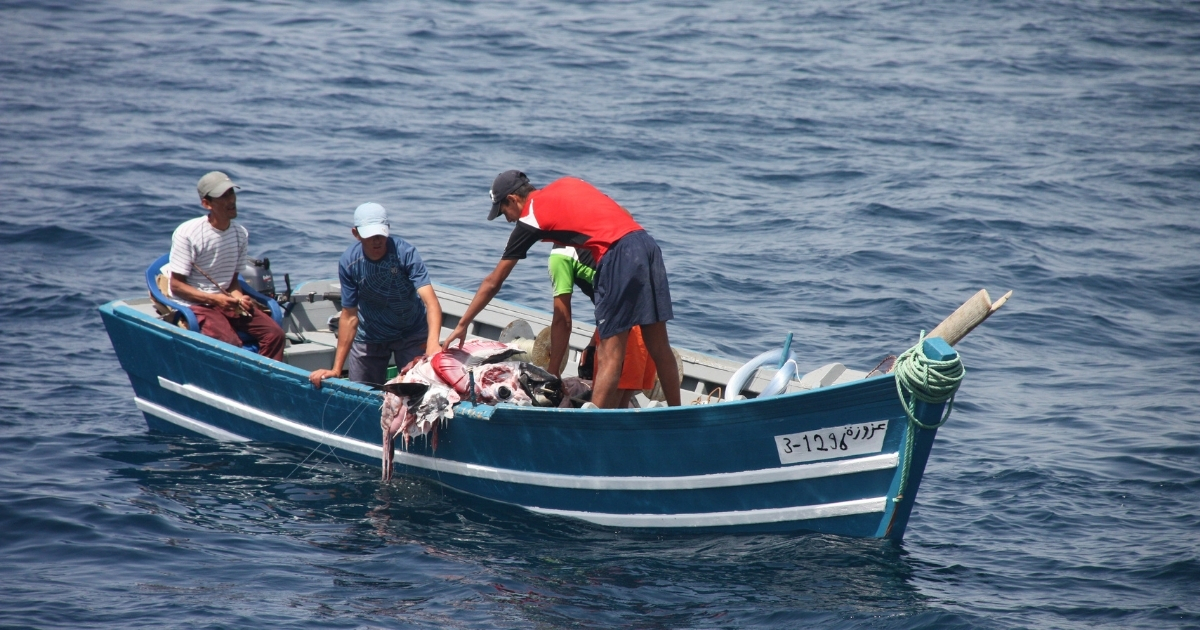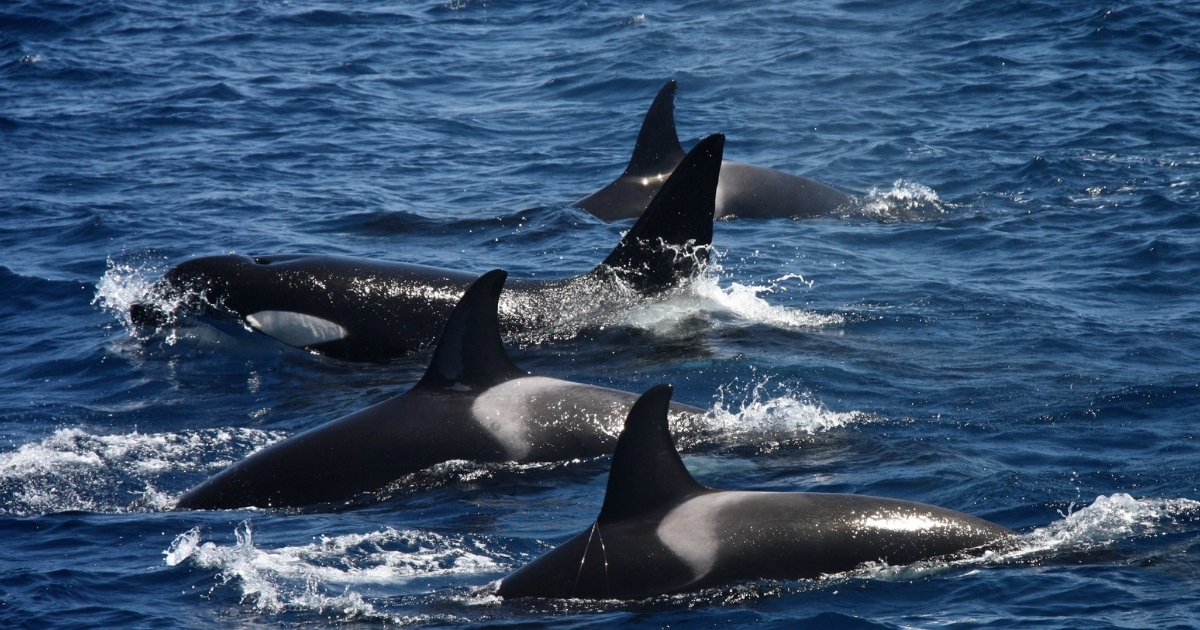Orcas in the Strait of Gibraltar: A Captain's Memoir

One of my favourite stories of the seas is about the orcas that visit the Strait of Gibraltar. I have encountered orcas when sailing in the middle of the Atlantic Ocean, in the Galapagos islands and in Norway, but the most impressive interaction with these extraordinary marine mammals in the wild happens between the columns of Hercules.
For 11 years of my life, I have been collaborating with the Foundation for Information and Research on Marine Mammals (FIRMM), founded in 1998 by Katharina Heyer in the little fishing village of Tarifa. FIRMM conducted the first research into marine mammals in the Strait of Gibraltar and back then we were a little group of ocean lovers, passionate and curious about the story behind the presence of dolphins and whales in the Strait, and wanting to know more.
Nowadays, FIRMM has become a whale-watching operator and, before every trip, volunteers give talks about marine mammals and environmental concerns in several languages. Between 2001 and 2011, we organised educational campaigns in collaboration with the government and received corporate funding, which allowed us to reach out to over 20,000 scholars in the region.
The little village of Tarifa is the most southern point of continental Europe and is situated in the heart of the Strait of Gibraltar, just 14 km away from Africa. Therefore, the closest point to Africa is the little military island of Tarifa and not “Europa point” in Gibraltar. Tarifa is more renowned as one of the world's best destinations for windsurfing, and the Strait of Gibraltar is more associated with the transit of drugs and immigrants, with nearly 350 commercial ships transiting every single day.
The Strait of Gibraltar is also emblematic because it's where the Mediterranean Sea and the Atlantic Ocean meet. Every six hours, through the tides, the Atlantic pushes into the Mediterranean, which has nowhere to go apart from the Suez Canal. Because of the evaporation of the water during the summer months, the Mediterranean is warmer and also has higher salinity than the Atlantic Ocean.

For this reason, the Atlantic goes down to the bottom of the seabed and disrupts the dead sediments of the Mediterranean, bringing them up to the surface, which is called “upwellings”. Through photosynthesis, plankton will bloom again and start up the food chain - from phytoplankton, zooplankton, krill, small fish, all the way up to marine mammals.
In the Strait of Gibraltar, we encounter four species of resident marine mammals, common dolphins, striped dolphins, bottlenose dolphins and about 600 pilot whales. With the short distance between the two continents, it is also a good spot to observe larger whales, like sperm whales or fin whales during their migration in and out of the Mediterranean.
The Orcinus Orca or “killer whale”, got their nickname because they're known to eat other marine mammals, such as seals, dolphins, or young whales. No humans have ever been killed by orcas in their natural habitat. The only known cases of humans being killed by 'killer whales' occurred in captivity.
Before delving into the details about orcas and their interactions with humans, first we need to understand the fishing of the largest tuna in the world, which is why orcas visit the Strait of Gibraltar.
The Atlantic Blue-fin Tuna (Thunnus thynnus), or in Spanish “Atun Rojo”, is the largest tuna in the world. This fish can weigh up to 680kg, swims at a depth of between 500-1000 meters, and can live for as long as 15-30 years. This pelagic species does not use gills for oxygenation like other fish, but instead they keep their jaws open whilst swimming, in order not to suffocate. This is the main reason why these tunas cannot be farm bred, unless you tow the whole farm through the open water with boats.
These tuna migrate from the Atlantic to the Mediterranean for their spawning activities (fertilisation and releasing of eggs) to procreate. Around 30% of this migration includes tuna that have travelled from the Gulf of Mexico, crossing the Atlantic twice a year. Spawning takes place between May and August, peaking between June and July. One of the main spawning areas is south of the Balearics islands, which happens around 2:00-4:00am at a depth of 4 to 5 meters. Tuna of 15 to 20 years of age will lay around 45,000,000 eggs, from which only a tiny percentage will make it to adulthood.
Orcas swim at a maximum speed of 50-55 km/h, whereas these tunas can swim at speeds up to 70-100km/h, making it difficult for an orca to catch. We humans are of course interested in catching these tunas as well, and we've successfully done so for a long time.
Proof of tuna fishing here as long ago as 2000 BC can be found in the Roman ruins of Baelo Claudia. The presence of orcas also goes back to Roman times, as indicated by the name 'Cabo Espartel' on the maritime chart of this area (on the Moroccan coast). The name 'Esparte' is what Moroccan fishermen call the orca still today, referring to the dorsal fin (esparte means spade), which for a 9 metre/ 9 tonne male can be as high as 2 metres.

We need to differentiate two types of tuna fishing practice in this area of the world.
- Almadrabas: A specific type of purse seine fishing, catching tuna before they enter the Mediterranean, before spawning takes place.
- Palangre: A type of long-line fishing, which takes place after spawning when the tuna swim back to the Atlantic.
Almadrabas
Four Almadrabas are laid out from the little fishing villages of Conil, Barbate, Zahara de los Atunes and Tarifa, on the Spanish Atlantic coast just before the entrance to the Mediterranean. You can picture the Almadraba by imagining an underwater fence over a kilometre long, which guides these large tunas swimming along the coast into a labyrinth of nets which ends in a central cage called 'El Copo'.
Once enough tunas are caught, fishermen will lift this cage to the surface with the help of small boats equipped with pillars. Once the nets are lifted, men will step chest-deep into the water, equipped with large hooks to drag the tuna alongside their boats to get hoisted. The scene is bloody and extremely dangerous for the men themselves as the fins of tuna are as sharp as razor blades.
Since the tuna are caught before they have the opportunity to spawn, there are obvious repercussions in terms of a dramatic drop in the population this species.
Palangre
Once the schools of tuna head back out of the Mediterranean, they will be hungry as they have not eaten for a while. The Spanish and Moroccan fishermen know this and wait for them in the middle of the Strait to catch them. The deepest point in the Strait of Gibraltar is about 1000 meters, but in some areas it is only 300-400 metres deep.
The Palagre fishermen prepare their long lines equipped with hooks and use sardines as bait. Once at sea, these lines are dropped down to the bottom by attaching the hook to a cement block. Once the hook reaches the required depth, they give the line a strong pull to break a thin line between the hook and the stone. As the tuna swim up these underwater hills they encounter the sardines as a welcome snack and the fight is on.
It's surprising to see how Moroccan fisherman handle the lifting of a 200-300 kg tuna bare-handed from their little 8 metre wooden boats. The Spanish fishing boats are not much bigger, but might be equipped with a hydraulic winch to hoist the tunas on board.
This is the moment the orcas have been waiting for. When the fishermen have the tuna at around 30-40 metres under their boat, the killer whales take the opportunity to steal them. They have even been known to change their course upon hearing the hydraulic winches; they know exactly when to strike and after the first bite they try to steal the whole tuna off the hook.
The presence of youngsters within the pods indicates that this process is an opportunity to teach the calves. Interestingly, they never aim for the head where the hook is located - either they have learned to avoid it or it's thought they may use echolocation to sense the hook.
It has always surprised me to see how accepting these fishermen are toward the orcas. Over the years, the fishermen have become accustomed to the presence of whale-watching boats and sometimes they even show the leftovers of an attack for tourists to take pictures.
A total of around 45 orcas have been monitored in this area which is divided into five pods (families). Only two are bold enough to steal tuna. Two have only been seen approaching the bay of Cadiz or Barbate, and one will get closer to the palangre fishermen but will not interact, perhaps out of fear.

Since 1970, the blue-fin tuna population has decreased by 85-90%, mainly due to the lucrative fishing of this expensive fish. The main client is Japan where the highest bidder has paid up to $1,000,000 for a single blue-fin tuna.
Back in 2003-2004, I remember a Japanese fishing vessel being alongside the port of Tarifa, loading all the tuna from the Almadrabas directly on board in order to process the fish straightaway. They had electronic tools to measure the fat percentage, and some tuna were immediately transported in ice packs to Malaga airport to be flown out Tokyo fish market.
The Convention on International Trade in Endangered Species of Wild Fauna and Flora (CITES) has listed the blue-fin tuna as an endangered species, and the EU enforced an international ban on tuna fishing in 2010. However, the same people who signed that EU agreement did not go onto sign the proposal against the international trade of tuna.
Financial compensation in exchange for lower quotas was part of the negotiations, but even that was not considered good news for the little community of these four Almadrabas with around 400 workers. Unfortunately, the political measures to lower quotas long-term are therefore inconsistent, due to political pressure and negotiations between the EU, the ministry of fisheries and various fishermen associations, resulting in a 10% increase on quotas for 2020 based on the claim that the bluefin population had recovered.
Within the political process, the little Palangre fishing fleet was somehow left behind. Their quotes were lowered and they do not have any real voice. Their fleet is too small and politics did not accurately evaluate the importance of this activity to this local fishing community.
Palangre fishing is not only a more honest interaction between tuna, orca, and fishermen, but it also feeds the orcas and allows spawning to happen. In addition, no value has been attributed to the life stock of orcas, or the economic impact on the community of Tarifa. A normal whale-watching trip is worth about €30/pp and an orca trip (between 15 July and 15 August) is sold at €45, multiplied by a minimum of 70,000 tourists doing this trip every season.
Usually, when orcas are spotted entering deeper into the Mediterranean, it is not good news as they are most probably hungry and looking for food.
We can all play our part: Eat less or no tuna and help protect our oceans through sustainable fishing practices. We are all in this together, so personal responsibility means global responsibility!

Post your comment
You cannot post comments until you have logged in.
Login to post a commentComments
No one has commented on this page yet.
RSS feed for comments on this page | RSS feed for all comments